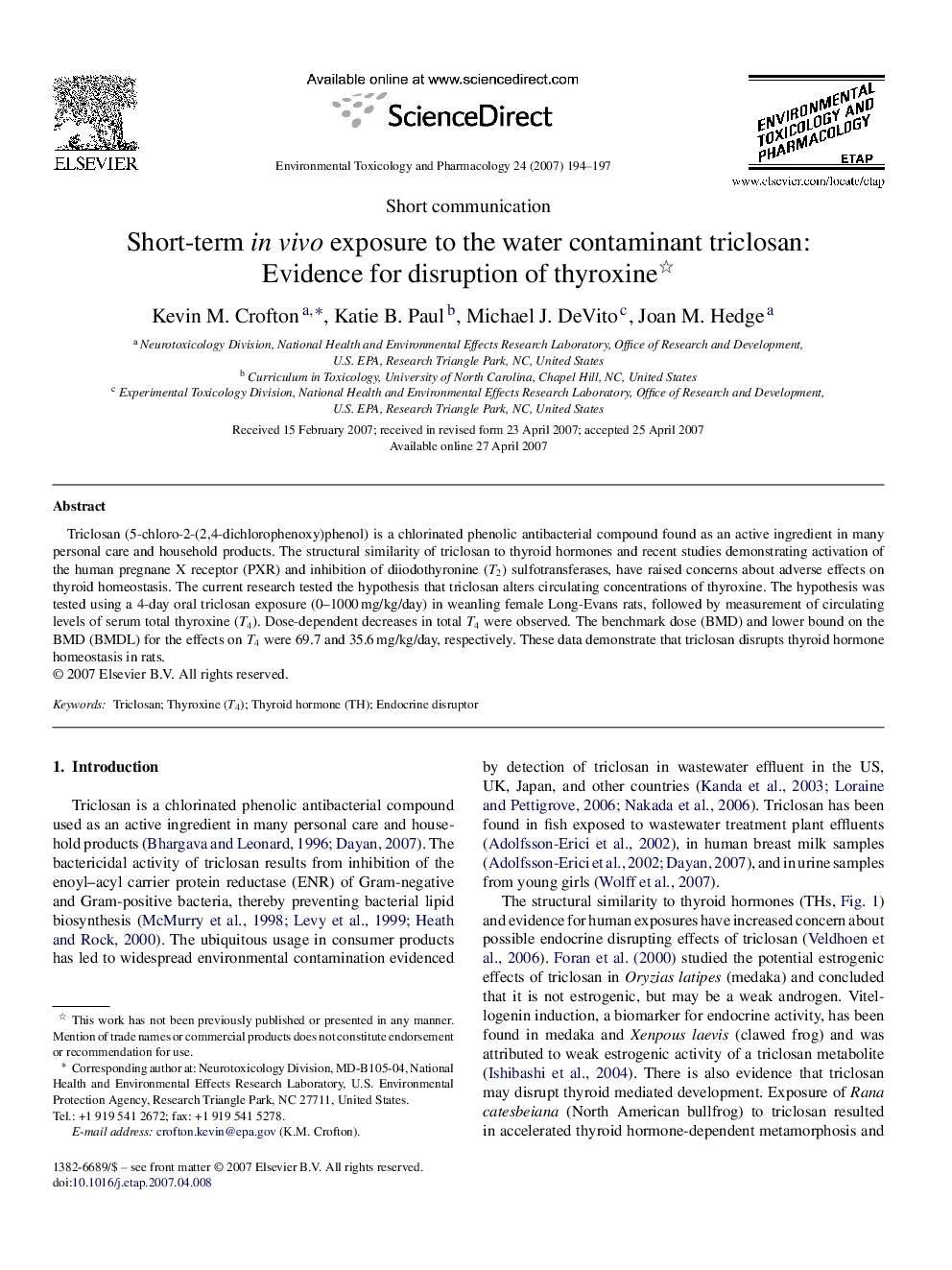| Article ID | Journal | Published Year | Pages | File Type |
|---|---|---|---|---|
| 2584454 | Environmental Toxicology and Pharmacology | 2007 | 4 Pages |
Triclosan (5-chloro-2-(2,4-dichlorophenoxy)phenol) is a chlorinated phenolic antibacterial compound found as an active ingredient in many personal care and household products. The structural similarity of triclosan to thyroid hormones and recent studies demonstrating activation of the human pregnane X receptor (PXR) and inhibition of diiodothyronine (T2) sulfotransferases, have raised concerns about adverse effects on thyroid homeostasis. The current research tested the hypothesis that triclosan alters circulating concentrations of thyroxine. The hypothesis was tested using a 4-day oral triclosan exposure (0–1000 mg/kg/day) in weanling female Long-Evans rats, followed by measurement of circulating levels of serum total thyroxine (T4). Dose-dependent decreases in total T4 were observed. The benchmark dose (BMD) and lower bound on the BMD (BMDL) for the effects on T4 were 69.7 and 35.6 mg/kg/day, respectively. These data demonstrate that triclosan disrupts thyroid hormone homeostasis in rats.
